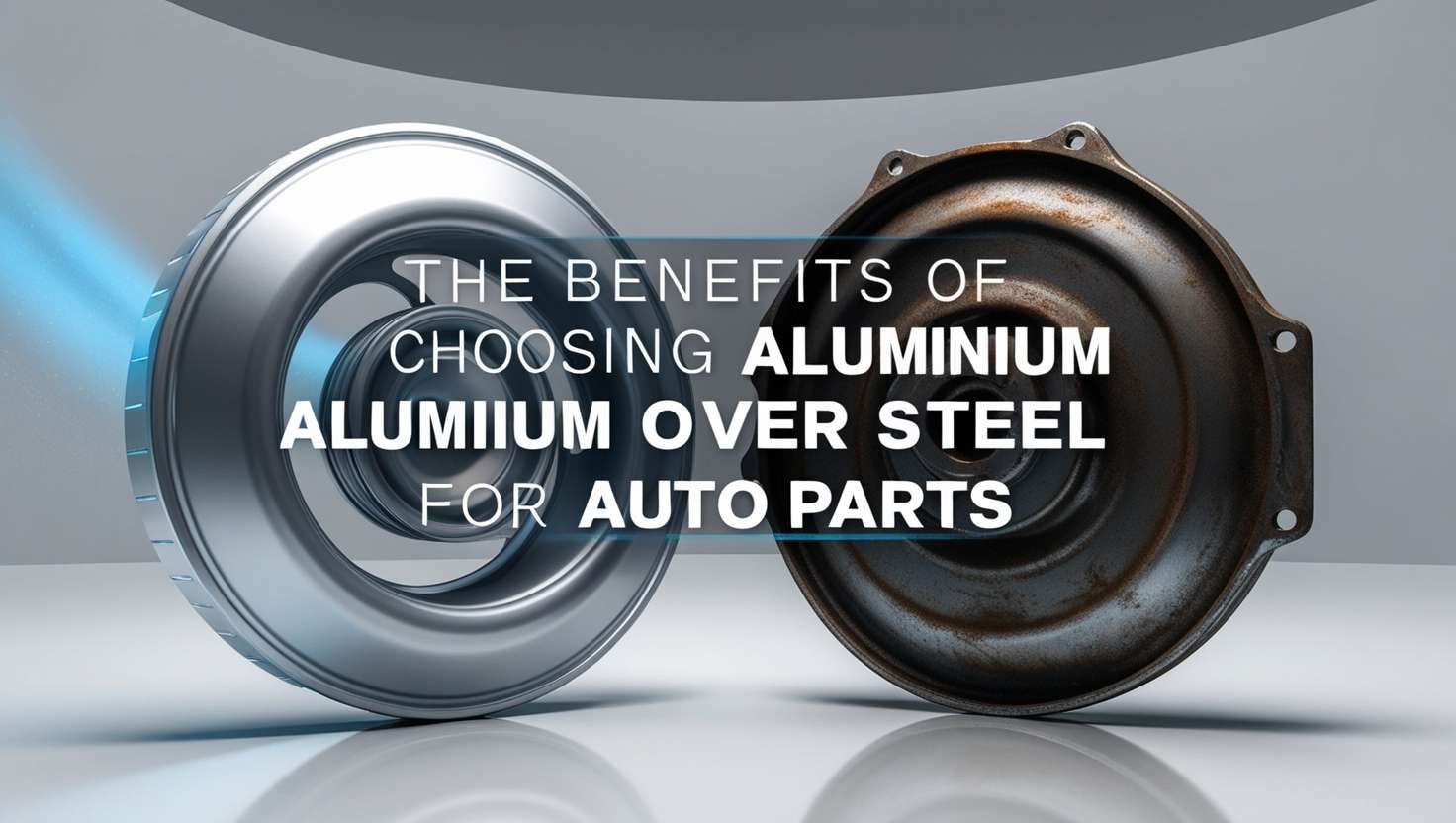


Automobile body construction materials trends have changed a lot over the years. There was a time when steel and iron were frequently used. Then, with the invention of plastics, more and more plastic components started being used. When the automobile was invented, wood was also used in automobile interiors and exteriors, but nowadays, we do not see wood anywhere in the vehicle’s construction. However, in recent years, aluminum has become the standard material used in both automobile interiors and exteriors.
• Aluminum serves multiple vehicle functions because of its versatility, as it is applied to hoods and doors alongside chassis and structural frame components.
• Engine blocks, cylinder heads, and pistons are formed through casting aluminum to achieve ideal properties of lightweight construction and heat transfer.
• Aluminum alloys are widely preferred for wheels, as their low mass improves fuel efficiency and contributes to responsive handling during driving.
• As aluminum is far lighter than other materials, it makes an excellent choice for controlling arms and knuckles.
• Aluminum's thermal conductivity properties establish it as the optimal material for the manufacture of radiators, condensers, and heat exchangers.
• Aluminum has a lustrous appearance when polished and gives visual appeal to a vehicle's decorative elements and seat frames.
Lightweight and Strong
Arguably, the most helpful characteristic of aluminum for automobile design and construction is that it is light compared to steel. Its weight is just one-third of steel, but it is as tough as steel if it is turned into an alloy and fabricated with care and attention to detail. The lightweight nature of aluminum is immensely beneficial for any vehicle, as the reduction in the aggregate weight of the vehicle means that less fuel is needed to move the car, leading to better fuel economy.
The weight reduction also contributes to better handling. In addition, the lightweight structure of an aluminum car enhances braking performance, as the brakes do not have to work as hard to stop a car. Less stress on the brakes means less wear and tear and a longer service life.
Durable and Corrosion-resistant
Aluminum has been utilized in the automobile and aerospace industries for decades. It possesses a high strength-to-weight ratio, and unlike steel, it does not rust as easily. Aluminum has also become a popular material for vehicles due to its light, strong, durable, and economical properties.
Aligns with Sustainability Goals
A direct result of utilizing aluminum in vehicle construction is fuel efficiency, which means a lower carbon footprint. But that is not all. The environment benefits greatly from aluminum because it undergoes effective recycling that preserves its original value every time manufacturers recycle it. Entire vehicles can be made from recycled aluminum, and this conserves the manufacturing energy used in production and also reduces land pollution.
The eco-friendliness of aluminum is not limited to ordinary vehicles but also extends to EV vehicles. EVs have a battery instead of an engine, and these electric batteries can weigh between 1000 and 4000 pounds. This weight only increases further if steel components are used elsewhere in the car. Using aluminum in automobile design means that automobile designers can make stylish vehicles without adding unnecessary weight.
Easy to Machine Precisely
Aluminum is a highly malleable metal that can be bent to form all kinds of shapes. This malleable quality makes it well-suited to making parts according to specific design requirements. It can be stamped, extruded, cast, etc. Since visual appeal is essential to vehicle design, aluminum’s malleable quality is convenient here. Aluminum also provides plenty of choice in surface coloring.
Various treatments, like anodizing and lacquering, can make aluminum's surface texture unique. Therefore, aluminum metal can be designed and given a surface treatment to make a component truly aesthetic. On the other hand, steel does not offer the same degree of flexibility since it is not as malleable and cannot be given surface treatment as easily.
Contributes to Vehicle Safety
Vehicles should be designed in such a way that they contribute to the safety of the passenger and driver. The risk of accidents is always high, and no compromises should be made to ensure safety. The use of aluminum in car design ultimately makes the vehicle safer because
• Aluminum enhances the structural integrity of the automobile. It is a durable, corrosion-resistant material. Aluminum is used as a reinforcing material to make the vehicle's pillars stiffer. Stronger pillars protect the vehicle from excessive damage during side impacts.
• The superior heat conduction properties of aluminum surpass steel because this feature helps components like the engine and battery pack efficiently dissipate their generated heat. The engine depends on aluminum to maintain proper operating temperatures. The material acts as an effective heat conductor, lowering the chances of electrical fires.
• In electric vehicles, aluminum is excellent for battery housing as it is a tough metal that can withstand vibrations and prevent battery overheating.
Aluminum has the winning edge over steel since it brings an array of benefits that steel cannot provide, ranging from fuel economy to sustainability. Because of its lighter weight, aluminum-deficient active weights lead to better acceleration, handling, and fuel economy results. The material's high thermal conductivity allows engines and brakes to achieve maximum efficiency with minimized wear and tear, hence minimizing maintenance and repair costs.
Aluminum brings considerable performance benefits, and corrosion can be far less problematic in aluminum investments. Due to newer technologies developing around fuel efficiency and environmental stewardship, the number of projects using aluminum is on the rise. For purchasing vehicle parts, use this Aluminum Auto Parts Supplier to buy in bulk from the right.
The use of aluminum is anticipated to positively affect emission levels and performance. It appears that the use of aluminum will evolve to include wheels, engine parts, suspension components, and body panels within applications for a better driving experience.
Automobile body construction materials trends ha
READ FULLThe construction industry knows which materials and objects
READ FULL